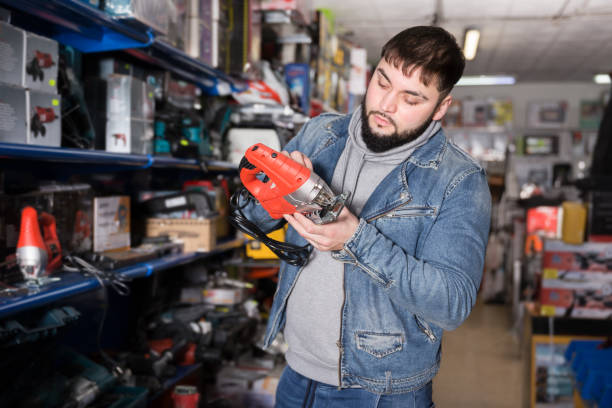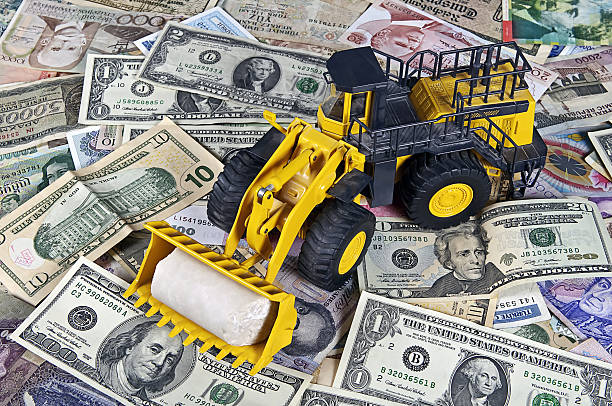Purchasing used equipment can be a cost-effective way to enhance productivity and expand operations without the financial strain of buying brand-new machinery. However, what may seem like a bargain at first glance can become costly if proper care and consideration are not exercised. Following a systematic approach during the purchase process is essential to avoid potential pitfalls.
Here are five key considerations to keep in mind when buying used equipment.
1. Detailed Inspection: It’s All in the Details
The first and most critical step is a thorough visual inspection of the equipment’s physical condition. While images in advertisements might look appealing, they do not always reveal underlying issues.

Here’s what to focus on during your inspection:
- General Appearance: Check for visible cracks, rust, scratches, dents, and welds. Cracks or haphazard welds might indicate previous damage or hasty repairs.
- Attachment Condition: Inspect the condition of attachments, such as buckets, blades, and other tools. Replacing attachments can be costly, so ensure they’re in good working condition.
- Ask for a Video Call Inspection: If distance prevents you from conducting a physical inspection, request a video call where the seller can walk you through the machine’s condition. This approach provides a real-time view of the equipment and helps you spot any details that static images might not capture.
2. Check the Correlation of Working Hours and Equipment Condition
Working hours are a key indicator of a machine’s usage and wear. Similar to how mileage affects the resale value of a car, operating hours influence the reliability of heavy equipment. When checking hours, consider the following:
- Compare with Similar Models: Compare the working hours of the machine you’re interested in with other machines of the same make, model, and year.
- Look for Signs of Tampering: Unscrupulous sellers may tamper with the hour meter to present a lower count. If something seems off, ask for verification using the manufacturer’s system. A trusted dealer should have no issue providing this information.
- Match Hours with Wear and Tear: If a machine’s appearance doesn’t match its reported hours, it’s a red flag. Excessive wear on controls, seats, or pedals could indicate heavier use than claimed.
3. Request an Inspection Report
An inspection report provides insight into the equipment’s mechanical, electrical, and structural state. Request this document from the seller to better understand the equipment’s condition. Here’s what to look for in an inspection report:
Comprehensive Documentation: The best reports cover engine performance, transmission health, hydraulic system checks, and brake and tyre condition.
- Seller’s Reputation: If the seller is reputable, their reports are more likely to be trustworthy. Nevertheless, it’s wise to cross-check the report’s claims during your physical or video inspection.
- Double-Check Details: Review the inspection report for any inconsistencies, especially if the report’s details differ from what you observe in person or during a video call.
4. Source and Seller Reputation: Buy from a Trusted Dealer or Marketplace
Where you buy your equipment matters; not all sellers are equal, and a bad seller can leave you with defective machinery and no recourse. Here’s how to safeguard yourself:
- Purchase from Reputable Dealers: Trustworthy dealers have a track record of selling quality used equipment. Popular marketplaces like Mascus, Mobile.de, Truck1, MachineryZone, and MachineryTrader are good starting points.
- Check Reviews and References: Research the seller’s history and read customer reviews. If possible, ask for references from previous buyers.
- Verify Banking Details: Scammers often use fake banking details. Ensure the seller’s name matches the bank account information on the formal quote.
- Avoid Red Flags: Be wary of sellers who refuse inspections or hesitate to provide inspection reports. Transparency is a sign of a reputable dealer.
5. Prioritise Quality Over Price
When buying used equipment, the temptation to opt for the cheapest option is strong. However, prioritising quality over price can save you from future headaches. Here’s why:
- Long-Term Value: Cheap machines may seem attractive, but hidden issues could result in costly repairs or downtime.
Operational Compatibility: Ensure the equipment fits your operational needs. A slightly more expensive machine that meets your needs may be a better investment. - Maintenance and Warranty: Check if the machine has any remaining warranty or if the seller offers after-sales support. Machines with maintenance records are often a safer choice.

Other Key Considerations
Beyond the five primary considerations, there are a few additional factors to consider to make a fully informed decision.
1. Structural Integrity
The structural integrity of a machine—its body, chassis, and frame—is crucial for its longevity. Look for signs of corrosion, cracks, and welding patches. If any of these issues exist, have a professional assess whether the damage is repairable or if it poses a long-term risk.
2. Interior Systems
Check the interior cabin for the condition of switches, gauges, levers, and operator seats. If possible, sit inside to gauge comfort and visibility. Faulty interior systems can hinder the machine’s efficiency and affect worker safety.
3. Engine Performance
The engine is the heart of heavy equipment. Start and listen for unusual sounds such as knocking, squealing, or grinding. Look for signs of leaks or abnormal smoke. The engine’s performance directly impacts the equipment’s efficiency and lifespan.
4. Compatibility and Upgradability
Buy equipment that’s compatible with your existing operations. It’s better to invest in machines that allow for future upgrades, as this can extend their lifespan and enhance productivity.
5. Age and Usage
Older equipment may have a lower price tag but can be costly in the long run if maintenance and parts are hard to come by. Factor in the number of operating hours, as equipment with high hours, is more susceptible to breakdowns.
Common Mistakes to Avoid When Buying Used Equipment
- Not Conducting a Test Run: Always test the equipment before purchase. Look for odd sounds, lagging performance, or faulty hydraulics.
- Skipping Maintenance Records: Machines with no maintenance history may have been neglected, leading to undetected issues.
- Trusting Unverified Sellers: Avoid sellers without a verifiable history or those who refuse inspections.
- Ignoring Transport and Shipping Costs: The cost of transporting heavy equipment can be high, so factor this into the total purchase cost.
Conclusion
Buying used equipment can be a game-changer for your business, offering high value at a reduced price. However, it’s not without risk. To ensure you get the most out of your investment, follow these five key steps: conduct a detailed inspection, verify working hours, request inspection reports, buy from trusted sellers, and prioritise quality over price. By being diligent and methodical, you’ll avoid costly mistakes and secure equipment that will serve you for years.

